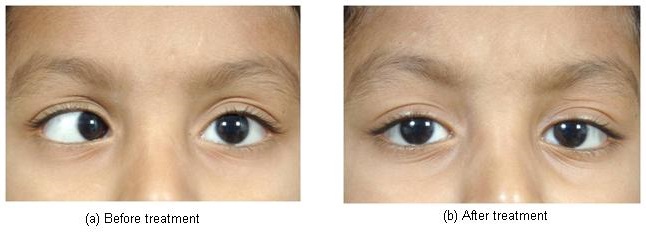Know about Squint
Strabismus or Cross-eyes or Squint is a vision problem in which both eyes are not in alignment with each other. Though it is common in infants and children, it can occur at any age. Adults may also develop the condition.
Causes
- Heredity
- Due to weak eye muscles or abnormal nerve impulses to the eye muscles
- Strabismus can accompany some systemic illnesses like diabetes, high blood pressure, multiple sclerosis, myasthenia gravis or thyroid disorders
- Blurred or poor vision due to cataract, corneal scars, glaucoma, refractive errors, optic nerve disease, retinal disease, tumors of the eye etc.
- Brought about by injuries
- Can accompany some systemic illnesses like diabetes, high blood pressure, multiple sclerosis, myasthenia gravis or thyroid disorders.
Symptoms
- Eyes that look misaligned
- Eyes that do not appear to move together
- Frequent blinking or squinting, especially in bright sunlight
- Tilting head to look at things
- Faulty depth perception
- Double vision
- Poor vision in one or both eyes
Treatment
The primary goal of treatment is to preserve or restore as much visual function as possible. Treatment of squint varies depending on the exact type and cause of the strabismus. After a complete eye examination, including a detailed study of the inner parts of the eye, an ophthalmologist can recommend appropriate optical, medical or surgical therapy. Nearly 40% patients with squint can be cured by spectacles and/or eye exercises. However, a large majority require surgical treatment. The squint operations are very safe and should be done at the earliest. Generally if the eyes are not aligned for more than 6 months in a child, irreversible damage to the three dimensional vision occurs, which is only partly reversible. Squint surgeries are performed successfully even in children as young as 4 months.

Specialities
- Cataract
- Glaucoma
- Cornea
- Retinal Detachment
- Oculoplasty
- Squint
- Keratoconus Treatment
- Uveities